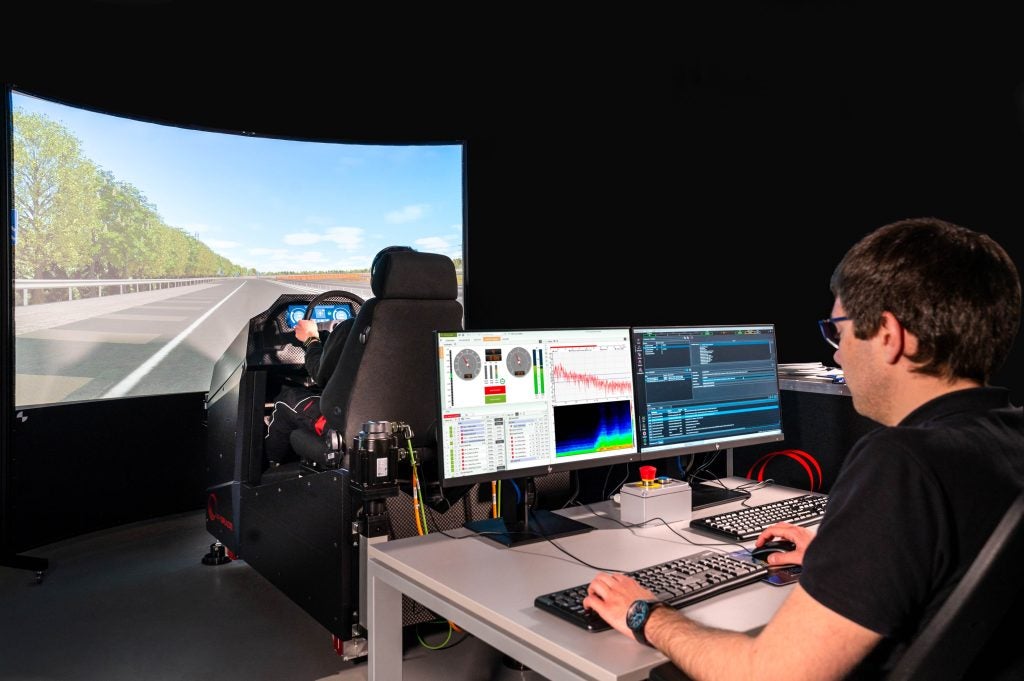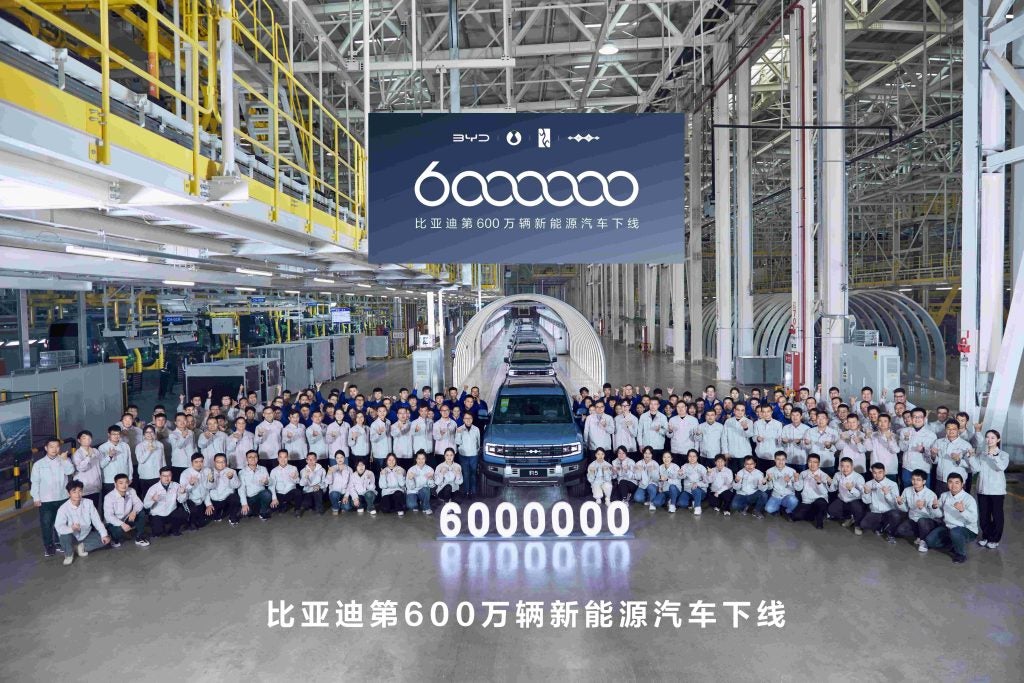 Miles Bryant, the president of DaimlerChrysler de Mexico, is positioning his company to confront an increasingly competitive future as new entrants like Toyota, Renault, Fiat and Peugeot prepare to challenge Mexico’s established automakers-General Motors, Ford, Volkswagen, Nissan, and DaimlerChrysler. The interlopers appear certain to attack the subcompact passenger car segment, the country’s fastest growing niche, just as they have in South America and Europe. Their small, freshly styled vehicles will exacerbate already mounting price pressures and inflict share and profit losses on some of the older players.
Miles Bryant, the president of DaimlerChrysler de Mexico, is positioning his company to confront an increasingly competitive future as new entrants like Toyota, Renault, Fiat and Peugeot prepare to challenge Mexico’s established automakers-General Motors, Ford, Volkswagen, Nissan, and DaimlerChrysler. The interlopers appear certain to attack the subcompact passenger car segment, the country’s fastest growing niche, just as they have in South America and Europe. Their small, freshly styled vehicles will exacerbate already mounting price pressures and inflict share and profit losses on some of the older players.
As Bryant sees it the assault of new entrants will coincide with a period of vehicle rationalization in North America and Europe, triggered by overcapacity in both regions. However, what such a convergence of forces means for Mexico and DaimlerChrysler in terms of new investments, plants and industry production during the next five years is unclear. Aside from the normal macroeconomic uncertainties surrounding these decisions Mexico’s automakers must answer questions about the impact of free trade on their strategies.
Today, Mexico has approximately three-dozen free trade agreements. Among the most important are those with the United States and Canada (Nafta, 1994-2003), European Union (Mexico-European Union Free Trade Agreement, 2000-2007) and Colombia and Venezuela (Group of 3, 1995-2007). Moreover, since 1998 Mexican goods have traded freely with Chile, following expiration of the Mexico-Chile Free Trade Agreement, 1992-1997.
From the vantage point of economic significance Nafta towers above its competitors, accounting for approximately 85% of Mexico’s trade. Although it is more significant than all of the others combined this situation could change dramatically as more agreements mature.
![]() For
For
example, Mexico is avidly pursuing a long-term automotive pact with Mercosur
that could spur a comprehensive FTA, but so far only has succeeded in reaching
a two-year bilateral accord with Brazil and a one-year treaty with Argentina.
Both expire next year. Obviously, the outcome of the Mercosur talks has important
implications for how the multinational vehicle manufacturers will allocate production
of subcompact (B platform) and compact cars (C platform) between Brazil and
Mexico, Latin America’s two most important rivals. Yet, viewed from a broader
perspective, the Mexico-Mercosur courtship is merely a prelude to the Free Trade
Agreement of the Americas (FTAA). Initial negotiations to create this bloc are
scheduled for early next year, but the FTAA itself will not be operational for
five years.
In spite of all these uncertainties and potential hazards Miles Bryant frankly discusses DaimlerChrysler’s plans for 2001 and 2002 in the exclusive interview published below. What is significant about his responses is their directness and lack of hyperbole. Bryant’s precision and understated opinions are characteristic of the man who consistently has ranked as one of the industry’s most effective leaders during since 1997, according to his peers.
His decisions and those of his top lieutenants are crucial for DaimlerChrysler because Mexico is one of its three most important global production sites. During calendar year 2000 the country accounted for 8.6% of the corporation’s global production (4.7mn units) and 13.5% of Chrysler’s total of 2.9mn vehicles, compared with only 5.5% for GM and 3.6% for Ford, respectively. Last year DaimlerChrysler de Mexico (DCM) recorded sales of $7.9bn for Chrysler Group vehicles, Freightliner trucks and Mercedes-Benz buses. However, revenues reached $9.1bn when income for non-vehicle and financial subsidiaries are included. These figures established DCM as Mexico’s 9th best company in 2000, measured in revenue terms, according to Expansion magazine. While profits are not revealed officially at DCM a cursory analysis of its domestic vehicle lineup, 85% of which are upscale imports (Neon and Stratus passenger cars, Cherokee and Durango SUVs and Voyager minivans) suggests that it is surely a leader in this category, too.
How well do you really know your competitors?
Access the most comprehensive Company Profiles on the market, powered by GlobalData. Save hours of research. Gain competitive edge.

Thank you!
Your download email will arrive shortly
Not ready to buy yet? Download a free sample
We are confident about the unique quality of our Company Profiles. However, we want you to make the most beneficial decision for your business, so we offer a free sample that you can download by submitting the below form
By GlobalDataIn order to defend his turf against encroachment Bryant reveals DaimlerChrysler’s plan to invest $1.058bn in 2001 and 2002 to ratchet up PT Cruiser capacity to 260,000 units (To-luca plant) and to increase engine production to 900,000 by 2003 (Saltillo plant). These projects should keep DCM roaring until Nafta’s restrictions on automotive trade end on December 31, 2003 and the new entrants arrive.

INTERVIEW
Just-Auto.Com (JAC): What is the status of Mexico’s automotive negotiations with Brazil and Mercosur?
Miles Bryant (MB): They have entered a very intensive phase, and it now appears likely that we can reach a long-term agreement by the end of the year or the beginning of 2002. It will be a precursor to an across-the-board agreement that includes all business sectors.
JAC: After so many false starts this sounds like good news. Before describing the key facets of the new deal it would be useful to review briefly Mexico’s two-year auto agreement with Brazil? What are its terms?
MB: Between July 2000 and July 2002 Mexico and Brazil agreed to establish specific vehicle quotas and reduced import tariffs. Under the agreement each country’s manufacturers is permitted to export 40,000 vehicles the first year and 50,000 for the second. These units are subject to an 8% duty, compared with the normal 23% to enter Mexico and 35% to enter Brazil. Such high rates have prevailed since the late 1990s because Mexico and Brazil do not linked by any comprehensive trade agreements. Clearly, the major objectives of the current negotiations are to remedy this situation.
JAC: What shape will the automotive agreement take? In other words, what will be the tariff rates and over what period of time will import duties be phased out?
MB: These questions are difficult to answer precisely because there are several contentious issues that have to be resolved. It is likely negotiations will focus on three distinct points: (1) import duties and the period in which they will be phased-out, (2) local content and (3) vehicle quotas.
JAC: Let’s examine each one individually, beginning with import duties.
MB: There are a couple of possible scenarios here. The new agreement could launch with an 8% import duty or alternately start at the much lower Nafta and EU levels. This year tariffs on vehicles exported to Mexico from these two regions are 2.2%. Next year they will be reduced to 1.1% and in 2003 they will be eliminated completely. Put another way, January 1, 2004 heralds an era of duty-free new vehicle trade between Mexico and the United States and Canada, on the one hand, and the countries of the European Union, on the other. Free trade in used vehicles begins five years later, on January 1, 2009.
Regardless of which tariff alternative is chosen we expect the agreement to spur reciprocal vehicle exchanges between Mexico and South America so that both sides benefit from the arrangement. It cannot simply benefit one party and work. With this in mind overall trade development would be facilitated greatly if negotiations between Mexico and Brazil and hopefully Argentina, too (Mercosur) were conducted with the FTAA’s timetable in mind. In other words, vehicle import duties should phased-out completely by 2005, the year in which they are purported to be eliminated under the FTAA. However, it is possible that this timeframe will not be respected and the new agreement will defend tariffs beyond 2005.
JAC: What about local content provisions?
MB: Right now auto manufacturers and government representatives from Mexico, Brazil and Argentina are discussing the minimum percentage of national content that a vehicle exported from each country must contain under the new agreement. Personally, I recommend a figure below 20% so that a truly competitive environment is created.
JAC: What about vehicle quotas?
MB: It appears inevitable that some form of quota will exist throughout the agreement period, although they will be significantly higher than they are today. However, the good news is that the accord will provide for the elimination of quotas as well as tariffs.
JAC: Moving from Mercosur to the EU what has been the impact of the Mexico-EU
Free Trade Agreement on DaimlerChrysler and the Mexican automotive industry?
MB: The Mexico-EU FTA sparked Renault, Seat and Peugeot to enter the market in Mexico’s most competitive segments-subcompacts and compacts. Renault’s Clio, Se-at’s Ibiza, Cordoba, Leon and Toledo, and Peugeot’s 206 and 306 are priced between $12,500 and $20,500 (USD) and aimed at the heart of Mexico’s market, the two segments that account for more than 70% of local passenger car sales.
The FTA with Europe also has increased imports of our Mercedes-Benz luxury cars from Germany. For instance, last year we imported 2,500 Mercedes-badged vehicles and this year we will bring in 3,500, a substantial jump made possible by the plummeting import duties. In addition, the agreement will lead to exports of PT Cruisers to Europe.
JAC: Which segments do you believe will grow fastest in Mexico?
MB: Subcompacts and compacts, precisely the segments that the Europeans newcomers have entered. If you examine the country’s demographics this makes perfect sense since median GDP per capita is somewhat less than $6,000 per year. To succeed here you are compelled to sell vehicles in these categories.
JAC: Your subcompact Dodge Atos priced at approximately $10,000 appears to be well positioned in the subcompact niche. How many do you expect to sell in 2001?
MB: Between 28,000 and 30,000 units. We have been successful with this vehicle that we import from Hyundai, our South Korean strategic alliance partner.
JAC: What is the duty that you pay per vehicle?
MB: We pay an 8% preferential tariff because of our high level of exports.
JAC: Speaking of exports the August figures released by AMIA (Mexican Motor Vehicle Manufacturers Association) indicate that DaimlerChrysler is the industry leader in exports. How many vehicles have you shipped abroad this year?
MB: During the first eight months of the year we exported 264,730 units, or 28.2% of the industry total of 938,245 units.
JAC: Which are the leading export models?
MB: Most are PT Cruisers and the rest are a variety of Ram Pickups. Currently, these are the vehicles that we manufacture in Mexico.
JAC: How many passenger cars and trucks did you build in Mexico last year?
MB: We produced about 401,000 units, almost 21% of the industry total of 1.9mn.
JAC: If we fast-forward to 2005 how many vehicles do you believe will be built then?
MB: That is difficult to predict because of overcapacity in North America and Europe, but surely there will be differences among individual automakers that will be determined by their different regional needs and exposures. While capacity will be or redirected regionally such reshuffling probably will vary between existing volume producers and newcomers.
As far as DaimlerChrysler is concerned capacity will not change dramatically in the next five years, although we are in the process of increasing our capacity by 80,000 units in response to the phenomenal worldwide demand that we have for the PT Cruiser.
 |
| The PT Cruiser DaimlerChrysler’s leading export model. |
JAC: What is the current capacity for the PT Cruiser?
MB: It is 180,000 units annually, and this will rise to 260,000 by the end of next year. Up till now the PT Cruiser has been built exclusively in our Toluca, Mexico plant, but the corporation is installing capacity for 50,000 units in our Graz, Austria factory. By the end of 2002, therefore, worldwide capacity for the vehicle will be 310,000.
JAC: How much is DCM planning to invest in the PT project in Mexico?
MB: We will invest $300mn in this project and another $520mn to manufacture a new engine in Saltillo that will raise total output at this plant to 900,000 engines per year (for export) by 2003-both 4 and 8 cylinder engines.. Also, we will spend another $238mn for upgrading other plants, introducing new model and retooling. Our total investment package for 2001-2002 amounts to $1.058bn.
JAC: How do the Toluca and Saltillo plants rank in terms of North American quality and productivity?
MB: Each is the best in North America in its product categories
JAC: What accounts for such outstanding Mexican performance?
MB: We have a very strong and efficient supplier of 250; after all, components account for almost 75% of manufacturing costs. The versatility of our workforce also is excellent.
JAC: Let’s examine sales. How many vehicles were sold in Mexico in 2000, and how many do you believe will be sold this year and next?
MB: Last year 886,000 units were sold and this year that figure should hit 910,000 units (retail), up about 3%. In 2002 sales will increase by 3.0%-3.5% to about 940,000 vehicles if the US economy rebounds. If it does not recover, the sales will be the same as this year.
JAC: How have DCM sales fared during the first eight months of 2001?
MB: We have sold 80,371 vehicles at retail in this period, 28.3% more than during the same period of 2000.
JAC: When do you believe sales will reach 1mn?
MB: In 2003.
JAC: Where do you believe sales will be in 2005?
MB: We could sell 1.2mn units by then. Personally, I am convinced that Mexico’s future is more dependent on domestic sales than on export growth, but there are important problems that must be resolved.
JAC: What are the obstacles that could impede significant local expansion?
MB: The high ISAN (tax on new vehicles) and the absence of tax deductibility for the purchase of new vehicles.
JAC: How likely is it that President Fox will act on these recommendations?
MB: This government is very receptive to these ideas, but there is political opposition. However, I remain optimistic that in time he will move in our direction because he understands that our industry is one of Mexico’s most important growth engines.
By Marc N. Scheinman, Just-Auto.Com
|







